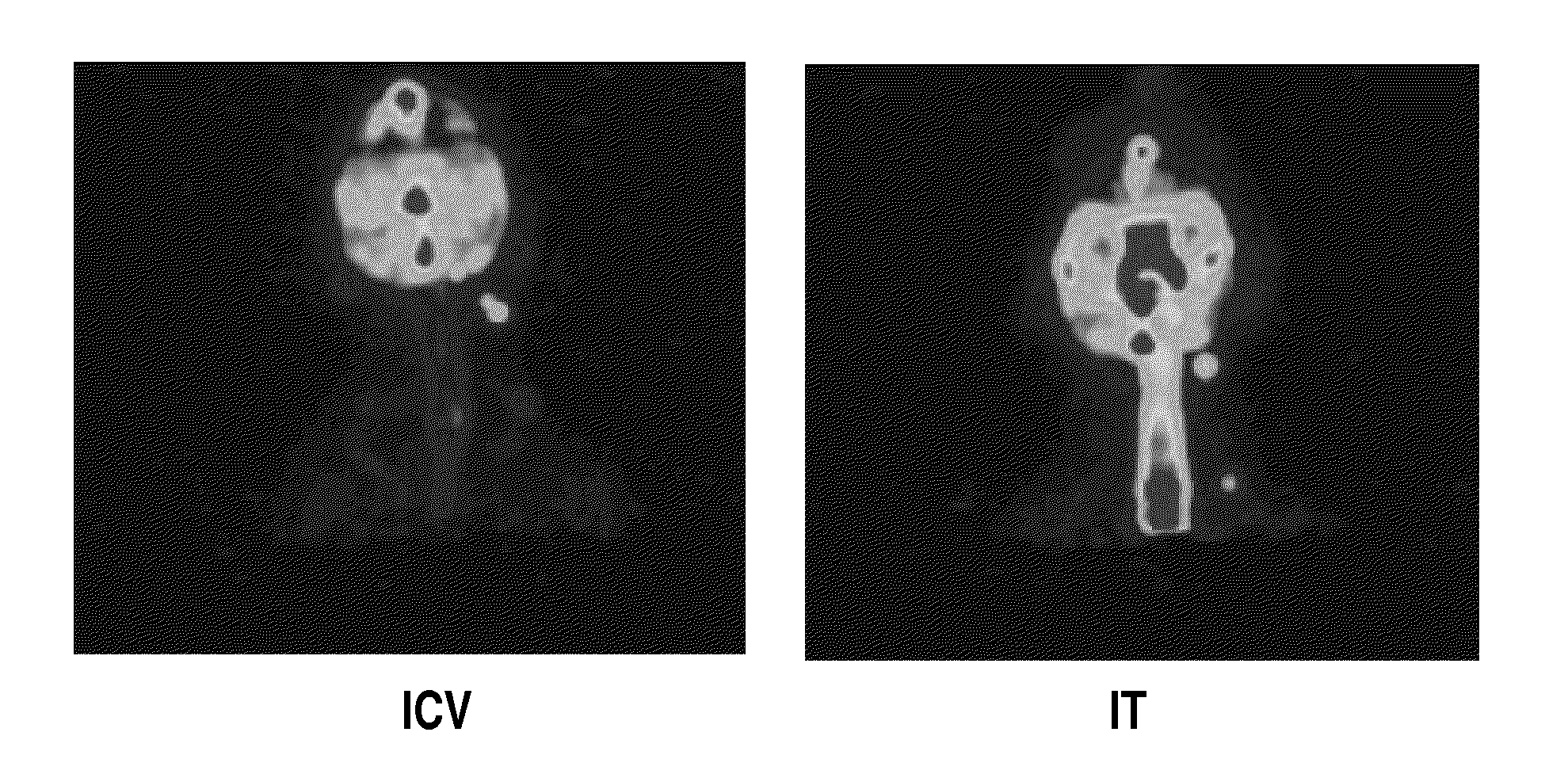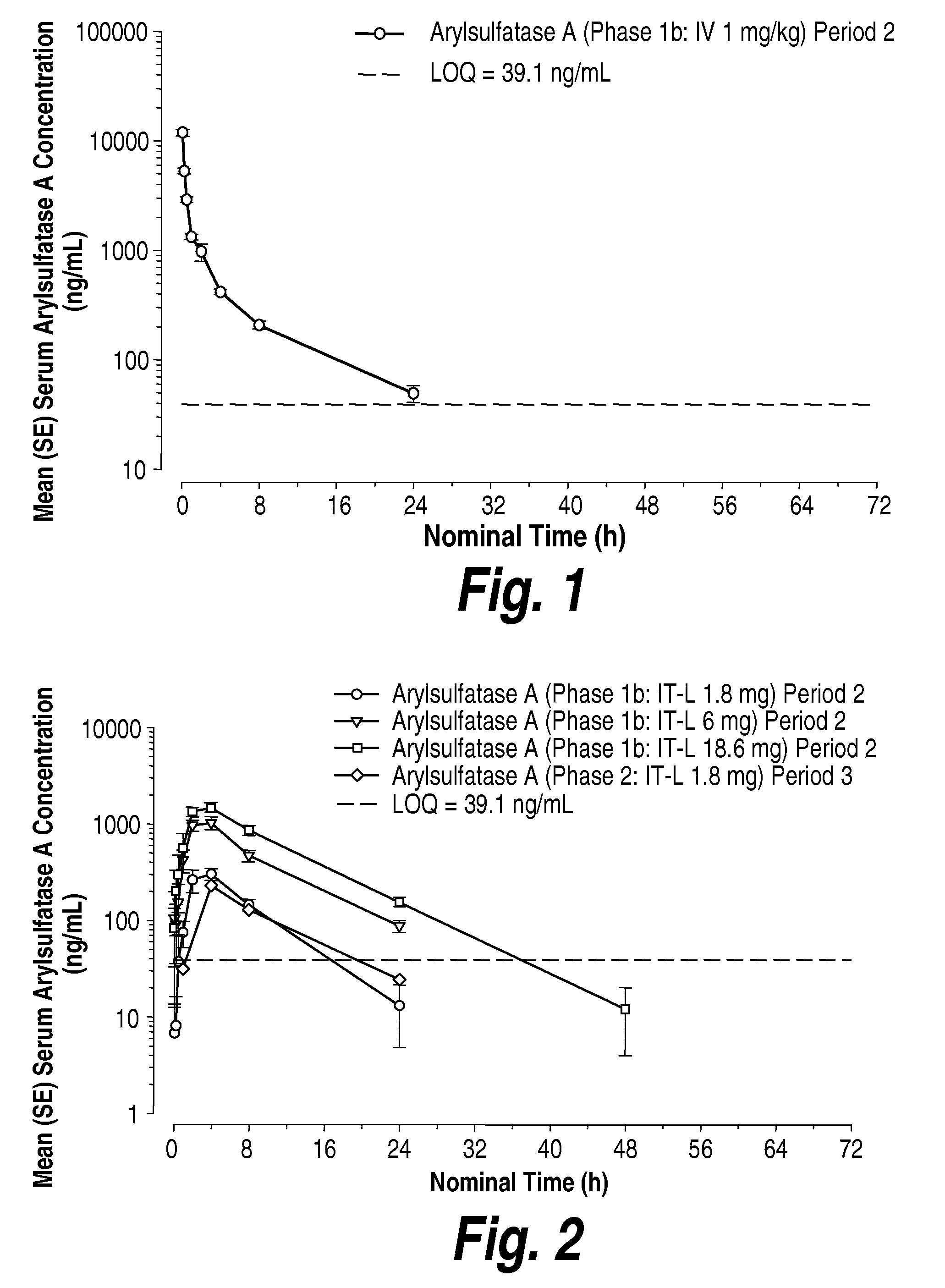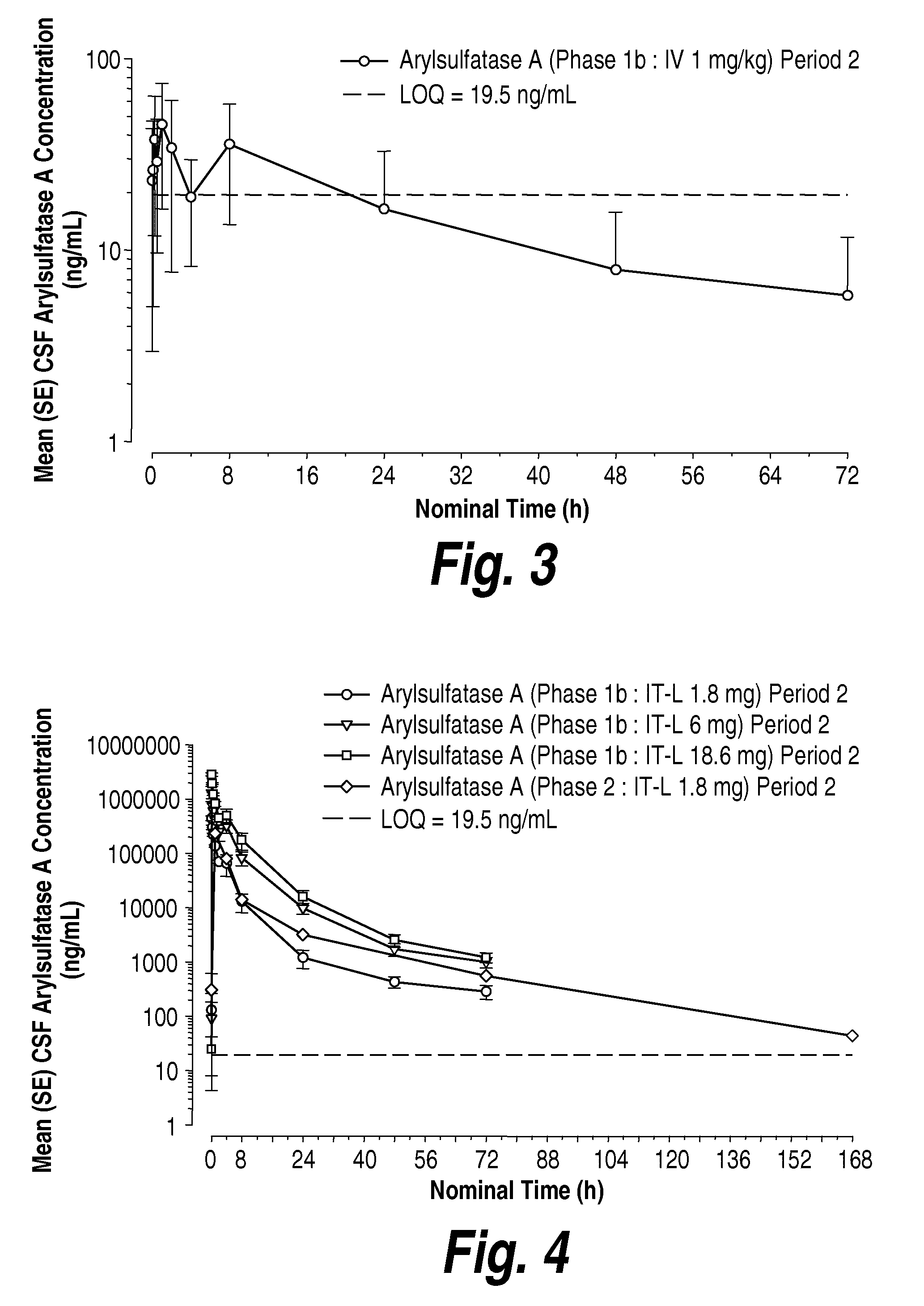Methods and compositions for CNS delivery of arylsulfatase a
a technology of arylsulfatase and composition, which is applied in the field of methods and compositions for cns delivery of arylsulfatase a, can solve the problems of poor diffusion of active agents from the site, tissue damage, immune response, etc., and achieves effective and less invasive approaches, high protein concentration delivery, and effective and extensive diffusion across various surfaces.
- Summary
- Abstract
- Description
- Claims
- Application Information
AI Technical Summary
Benefits of technology
Problems solved by technology
Method used
Image
Examples
example 1
Toxicology of IT Administered Arylsulfatase A
[0251]To assess the ability of other intrathecally-administered recombinant enzymes to distribute into the cells and tissues of the CNS, GLP study was conducted to evaluate repeat dose intrathecal (IT) administration of recombinantly-prepared human arylsulfatase A (rhASA) from a toxicology and safety pharmacology perspective over a one-month period in juvenile (less than 12 months of age) cynomolgus monkeys. The formulation of rhASA was prepared and formulated in a vehicle of 154 mM NaCl, 0.005% polysorbate 20 at a pH of 6.0.
[0252]To achieve this, nine male and nine female juvenile cynomolgus monkeys were randomly assigned by body weight to one of three treatment groups as shown in the following Table 6. The animals (with the exception of 1 male animal for Dose 1) received 0.6 mL short-term IT infusion of 0, 3 or 31 mg / mL of rhASA (total dose of 0, 1.8 or 18.6 mg) every other week for a total of three doses per animal. Body weights, clini...
example 2
Biodistribution with Radio-Labeled Protein
[0257]rhASA labeled with the positron emitter 124I was prepared and formulated in a vehicle of 154 mM NaCl, 0.005% polysorbate 20 at a pH of 6.0. A volume of the formulation equivalent to 3 mg of rhASA (corresponding to approximately 38 mg / kg of brain) was administered to adult cynomolgus monkeys via intracerebroventricular (ICV) and intrathecal (IT) routes of administration. The cynomolgus monkeys were subject to high-resolution PET scan imaging studies (microPET P4) to determine distribution of the administered 124I-labeled rhASA.
[0258]PET imaging data (FIG. 29) illustrates that both the ICV- and IT-administered 124I-labeled rhASA effectively distributed to the tissues of the CNS, and in particular the 124I-labeled rhASA administered through the IT-lumbar catheter immediately and uniformly spread in the cerebrospinal fluid (CSF) over the length of the spine. In particular, as depicted in FIG. 29, following ICV- and IT-administration, thera...
example 3
Formulations of Arylsulfatase A for It Administration
[0269]This example summarizes the work to establish a high concentration liquid dosage form of rhASA (arylsulfase A) and the formulation of drug substance and drug product for treatment of Metachromatoc Leukodystrophy (MLD) via the intrathecal (IT) route of administration.
[0270]The stability data demonstrate that the saline formulation of drug substance and drug product (without PBS 20) is stable after 18 months at <−65 degrees C. and 18 months at 2-8 degrees C. During the pharmaceutical development of this protein, the solubility and stability of rhASA was investigated under limited buffer and excipient conditions due to its intended delivery to the CNS. Previously, formulation development studies had been conducted to develop an intravenous (IV) formulation. Based on the results of these experiments, a formulation containing 30 mg / ml of rhASA in 10 mM citrate-phosphate buffer, pH 5.5 with 137 mM NaCl and 0.15% poloxomer 188 was ...
PUM
| Property | Measurement | Unit |
|---|---|---|
| Fraction | aaaaa | aaaaa |
| Time | aaaaa | aaaaa |
| Time | aaaaa | aaaaa |
Abstract
Description
Claims
Application Information
 Login to View More
Login to View More - R&D
- Intellectual Property
- Life Sciences
- Materials
- Tech Scout
- Unparalleled Data Quality
- Higher Quality Content
- 60% Fewer Hallucinations
Browse by: Latest US Patents, China's latest patents, Technical Efficacy Thesaurus, Application Domain, Technology Topic, Popular Technical Reports.
© 2025 PatSnap. All rights reserved.Legal|Privacy policy|Modern Slavery Act Transparency Statement|Sitemap|About US| Contact US: help@patsnap.com



